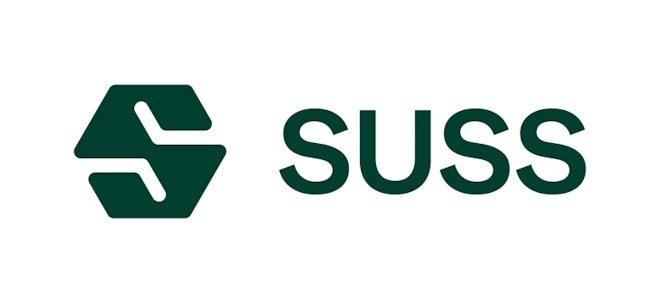When Ireland’s weakest banks were found to be behind a surprise spike in emergency borrowing from the European Central Bank last week, the market reaction was perhaps surprising: it was generally relief.
Speculation about who might have had to turn to the ECB’s overnight loans, offered at a penalty interest rate, had rippled through the market at the end of last week – a mistaken, “fat finger” trade? Unknown strains in the system? But because it turned out to be Anglo Irish Bank and Irish Nationwide Building Society, the news was considered positive, because it marked another step in the winding-up of these two nationalised institutions.
The two banks are in the process of selling their deposits to rivals, and deals could be announced shortly. They therefore had to switch from pledging collateral for the ECB’s weeklong liquidity loans system to the overnight facility, meant mainly for emergency lending.
This is the latest in a number of steps to resolve Ireland’s banking mess. But one group it might not be so good for, however, is the banks’ bondholders.
“Burn the bondholders” has become one of the rallying cries of Ireland’s election campaign, reflecting widespread public anger that the investors who put in the funds that allowed the banks to lend imprudently have not yet shared the bail-out pain.
The European Union is currently debating proposals to deal with this in future through a process known as “bail-in”, but Ireland’s politicians, braced for this Friday’s general election, seem unlikely to wait for that.
Michael Noonan of Fine Gael, seen as the most likely finance minister after Friday, warned this month that the country could “unilaterally” restructure its banks’ debts if it could not reach agreement with Ireland’s bail-out partners.
Even Brian Lenihan, the current finance minister who has steadily maintained that senior bondholders should not be hit, said recently the government wanted a “substantial discount” on remaining unsecured senior bank bonds.
To date, the government and the banks have focused on junior debt, which ranks lower than senior debt and pays a higher interest rate for the greater risk of losses.
Anglo Irish went first, forcing its junior debtholders to accept just 20 per cent of their bonds’ face value, while Bank of Ireland and Allied Irish Banks have both subsequently offered their own debt swaps at massively discounted prices to reduce the new capital they must still raise.
Last week Bank of Ireland even announced a €100m writedown on its holding in another Irish bank’s junior debt following a debt swap – thought to be from Anglo Irish’s punitive deal.
But talk to investors and they warn that forcing losses – “haircutting”, in industry parlance – would send a damaging signal about Ireland’s willingness to pay, which is a more damning issue in bond market eyes than a problem with its ability to pay.
At stake is just €17.5bn to €20bn ($24bn-$27.3bn) of senior debt, because most Irish bank debt is still covered by government guarantees.
Investors are increasingly making it clear which banks’ bondholders they think most likely to take any losses: the two nationalised banks.
On Monday, Anglo Irish senior unsecured debt was trading at about 64.5 per cent of face value. Observers said that implied the market was still expecting an offer of about 70 per cent of face value, because discounted deals tend to sweeten the offer with a small premium to market rates. That indicated that the market had priced in a significant haircut, though one still well above the pain inflicted on its junior debtholders.
Losses on Anglo Irish and Irish Nationwide’s senior bondholders are seen as less likely to upset debt markets elsewhere – notably among Europe’s other weak peripheral nations, where the spectre of a bail-out still looms.
However, Ireland’s bail-out partners – the ECB, European Union and International Monetary Fund – have made their opposition to haircuts clear even for those two.
Last week Olli Rehn, the EU economic and monetary affairs commissioner, said there was “simply no appetite” for losses for senior bondholders because of contagion dangers.
Investors are relatively sanguine – so far – that bondholder pain will stop there.
The unsecured senior debt of Allied Irish Banks and Bank of Ireland does not currently reflect big fears. Bank of Ireland’s senior unsecured debt was trading at about 92 per cent and AIB’s at 84 per cent.
It all depends, however, on the new government, and particularly how it takes up plans to recapitalise the two banks – postponed last week by the current government – and how the two fare in stress tests due next month.
Currently Bank of Ireland needs €1.5bn, while AIB must find €4.7bn.
“If AIB needs significantly more capital in the future on top of the current €4.7bn, the Armageddon scenario would be for the Irish government to say ‘enough is enough, we’re splitting you into good bank and bad bank and the bondholders are staying with the bad bank’,” says Ivan Zubo, a bank credit analyst at BNP Paribas.
“That would be a big shock to the system, but on the other hand there has to be some compromise between the taxpayer throwing money into a black hole and bondholders taking some pain.”
Bank of Ireland, as the best capitalised, is seen as the most secure.
One banker says: “They’ll still want a national champion bank. Forcing losses on its senior bondholders would be economically ‘courageous’ to say the least.”


 Thread abonnieren
Thread abonnieren



 0,333 is nen guter Preis denke ich.
0,333 is nen guter Preis denke ich.